Our Cities

Arion
P.O. Box 291Arion, IA 51528
Arion
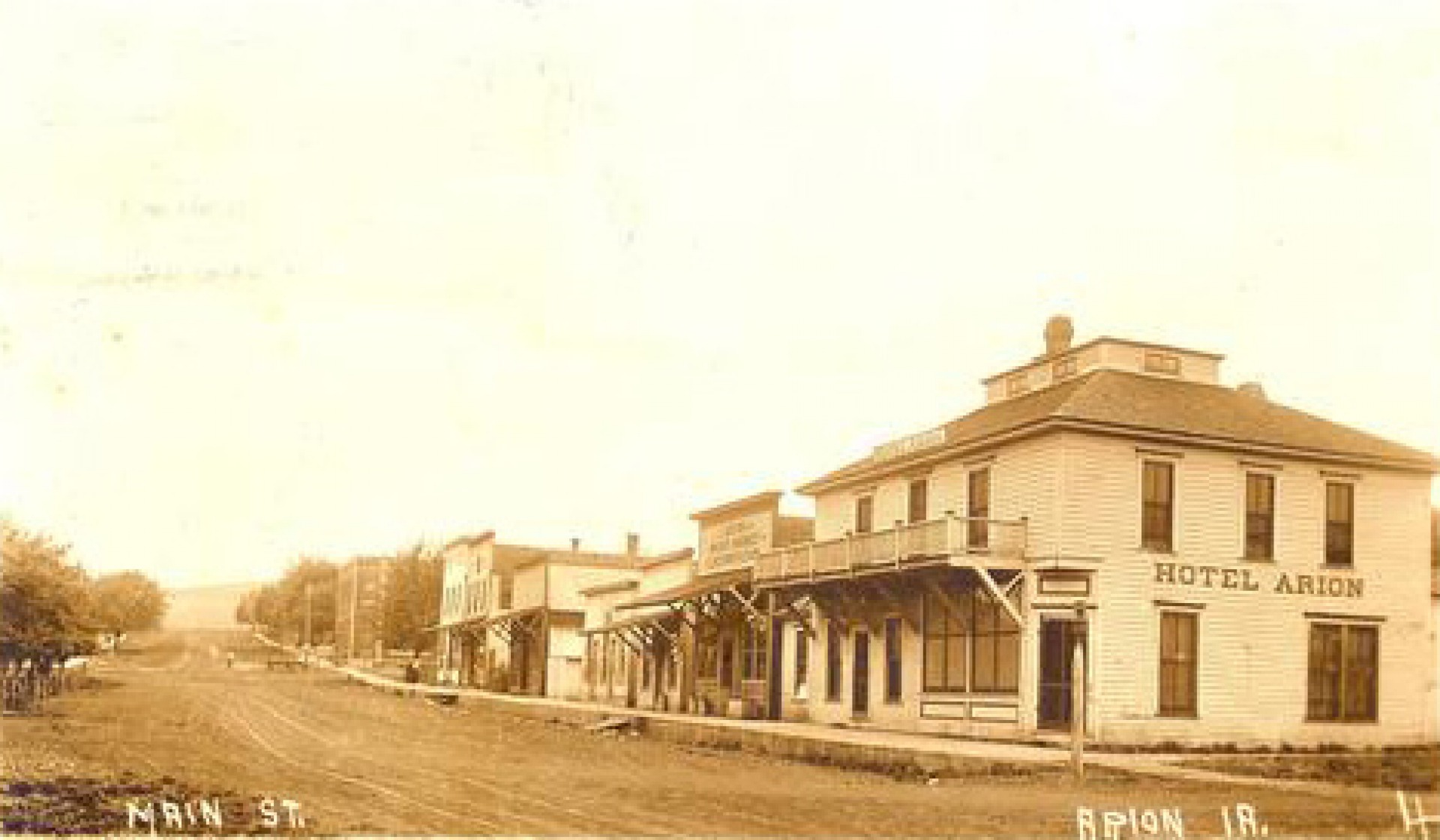
Railroad Crossing
Miss Lydia Lanning had come to what is now Arion in 1886 to teach in the local school. She was married to Mr. "Chin" Butler in 1887. She was appointed postmaster after taking a Civil Service examination on July 2, 1888. When the post office was established the town took the name of Lydia. Two and a half years later the named was changed to Arion, on December 19, 1890.
There was no stop at Arion where the Milwaukee crossed the Northwestern. The question arose whether a depot was necessary at the crossing. The Milwaukee had no objections. The Northwestern was willing to put in a "Y" for freight traffic, but no depot. Citizens of Denison wanted a depot platform and depot to accommodate people traveling from towns on the Milwaukee line to get to Denison. Commissioners decided that a large number of citizens of Crawford County would be greatly benefitted by proper facilities for transfer from one road to the other at this crossing.
By February 1888, an average of 20 passengers per day were changing cars there. Now people from Buck Grove and the surrounding area could get back to the county seat or visit with relatives or friends by means of the railroad as other types of transportation were much slower, the other means being walking, horseback, or team and buggy.
County Fair
The people of Arion and vicinity engaged as a whole, assisted by good men from all over the county, in founding and maintaining the Crawford County Fair at Arion, starting in 1907. An association was formed, grounds leased, and successful exhibitions given for years. The fairgrounds were located on grounds between Arion and the Boyer River south of town.
Everyone looked forward to September and the annual event, "The Arion Fair!" The ladies worked feverishly over their wood and cob burning cookstoves and ovens preparing their bread, pies, cookies, jellies, etc. to show at the fair. Sewing and other skills were shown. Everyone hoped to be the winner of the coveted prizes. The men also excelled in their display of livestock and grains.
Busy Town
Due to the three railroads, Arion's early history was marked by some lawlessness on account of the fact that it was a convenient stopping point for that class of undesirable citizens known as tramps. Mr. Cummings was appointed deputy sheriff and lived here until 1907 when he moved to Denison.
With three railroads, hotels were in great demand to accommodate the travelers in the early days. The Greens' Hotel was built and a restaurant with rooms for rent. In 1921 there was a disastrous fire. An entire row of buildings extending from the post office to the Greens' Hotel was destroyed. These buildings were never replaced.
The Arion business houses included three hotels; general store; meat market and grocery; hardware, plumbing, and harness shops; a shoe and furnishing goods store; barbershop; restaurant and lunchroom; pool hall; saloon; lumberyard; livery stable; blacksmith and wagon shop; two elevators and grain business; bank; garage; hospital; doctor's office and drugstore; building contractor; mason and dray wagon; telephone office; and three railroad stockyards.
Buffalo Days
Buffalo Days were held the first Sunday of September, around Labor Day. It started early Sunday morning and didn't end until around 2 a.m. Monday morning. Sunday started out with figure eight and then tough trucks. After all that was done, you could go over to the park and sit in the tent for an auction. The money that they received went to help children with cancer and other kinds of sicknesses. There was even a talent show contest ranging from all different ages followed by a dance. Buffalo Days were known for its famous buffalo burgers.
Learn more at IAGenWeb Project's website.

Aspinwall
P.O. Box 6Aspinwall, IA 51432
Aspinwall
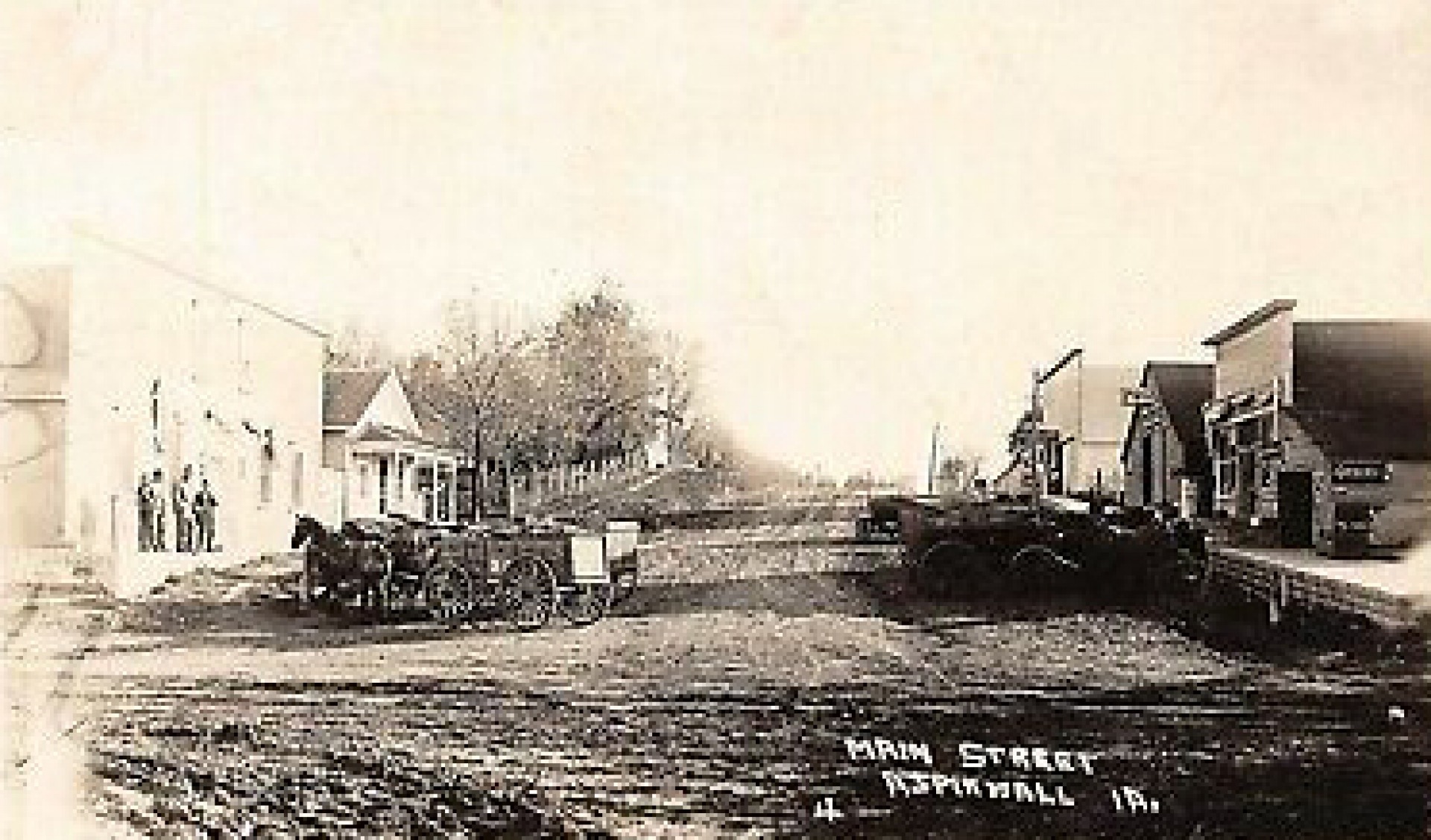
The area that would become Aspinwall was purchased from the Milwaukee Railroad Company in 1882. The Milwaukee Land Company purchased and sold land for improvement along the Milwaukee Railroad route. The location of Aspinwall was probably chosen by the railroad officials both as a central trading point for livestock and grain and because the steam-powered trains needed to "take-on" water and coal every few miles.
The town of Aspinwall was platted on August 21, 1882, and within two years it was a flourishing community of 300, bustling with activity. Several businesses, including a hotel, three general stores, one harness shop, one drug store, two saloons, two grain dealers, two coal dealers, one livestock and one lumber dealer, one meat market, one hardware store, two feed stables, one blacksmith and wagon shop, one paint shop, and two dealers in agricultural implements had been opened. The first settlers in the Aspinwall area were mainly of German and Irish descent.
In 1886, a decision was made by the Milwaukee that halted the promise of growth in Aspinwall. Milwaukee officials decided to make a connection with the meat-packing center of Sioux City. The location for the new connection was at the site that would become Manilla. Many Aspinwall businesses realized the possibilities of this new town and moved their stores and homes to the new hub.

Buck Grove
330 4th StBuck Grove, IA 51528
Buck Grove
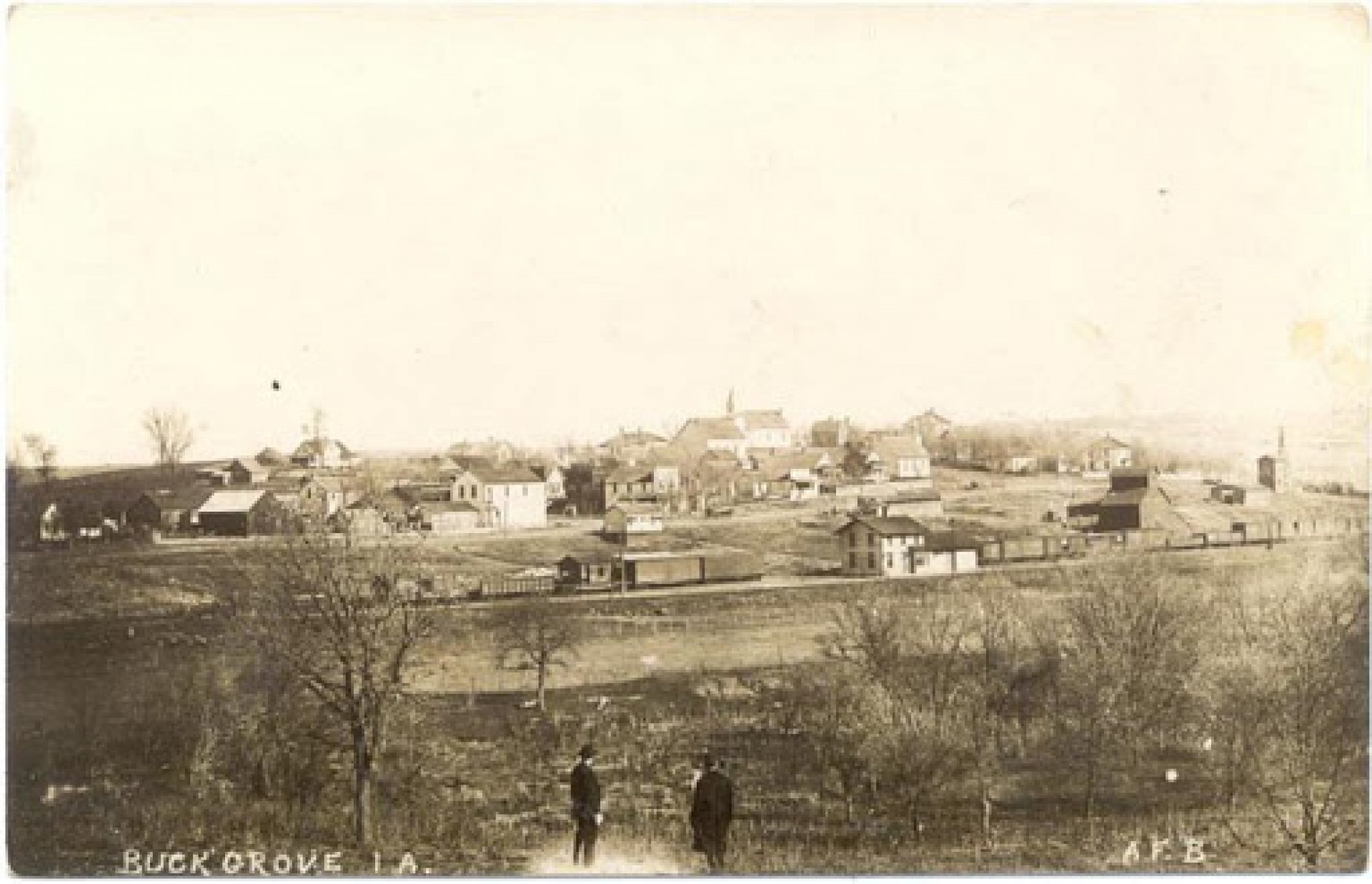
Timber & Game
Mathias Didra became the first German immigrant to settle in Crawford County in 1853. He set up a sawmill in 1854 in Washington Township in what would become Buck Grove. In 1862, a little market town earned a spot in the center of Washington Township of Crawford County. The land around the town was used for farming and grazing cattle. It was also found to be a good hunting ground because of the many deer. Because of this, the town was named Buck Grove. This town was on the Sioux City branch of the Milwaukee Railroad and in many ways was an ambitious and thriving town.
Down to Business
After setting up businesses, the businessmen were also the founders of three churches: Catholic, Lutheran, and Methodist. By 1897, Buck Grove was a town of about 125 people. Fred Gigax's general store had dry goods, notions, boots, shoes, men's furnishings, and groceries. The St. Paul and Kansas City Grain Company had a large elevator in Buck Grove which could hold 10,000 bushels of grain. The machinery was run by steam engine. Mrs. Fanny Bonney had a drug store that sold medicines, cigars, tobacco, candy, glass, paints, and oils.
Riding the Rails
The history of the railroad is parallel to other towns in the area which were also served by the Milwaukee. The period from 1866 to 1900 was one of steady growth. In 1881, a second railroad, the Milwaukee, reached the county. Colonel Hamilton said that when it came through, only one-third of the county was cultivated and land was selling for $10.00 an acre.
The Chicago, Milwaukee, and St. Paul Railroad extended its line from Manilla through Buck Grove and west to Sioux City, crossing the Northwestern tracks in 1886 at what is now Arion. Regular trains began to run on the Milwaukee Road from Manilla to Sioux City by June of 1887. It took three and a half hours to run the 90 miles. There were two trains each way, except Sunday when there was only one.
School Days
The people were concerned about education so they built a small school in which there were eight grades with approximately 15 students. School was held only in the winter months because children had to help with chores and cut wood during the other seasons. Most children progressed at their own speed learning to read, write, and solve arithmetic problems. Children would play marbles, build forts, and have snowball fights, climb trees, and build tree houses during their recesses.
The teachers played an important role during this time besides teaching. They carried wood and cobs for the stove and made sure it was warm for the children in the school.
Learn more at IAGenWeb Project's website.
Charter Oak
453 Railroad Street • P.O. Box 74Charter Oak, IA 51439
Charter Oak
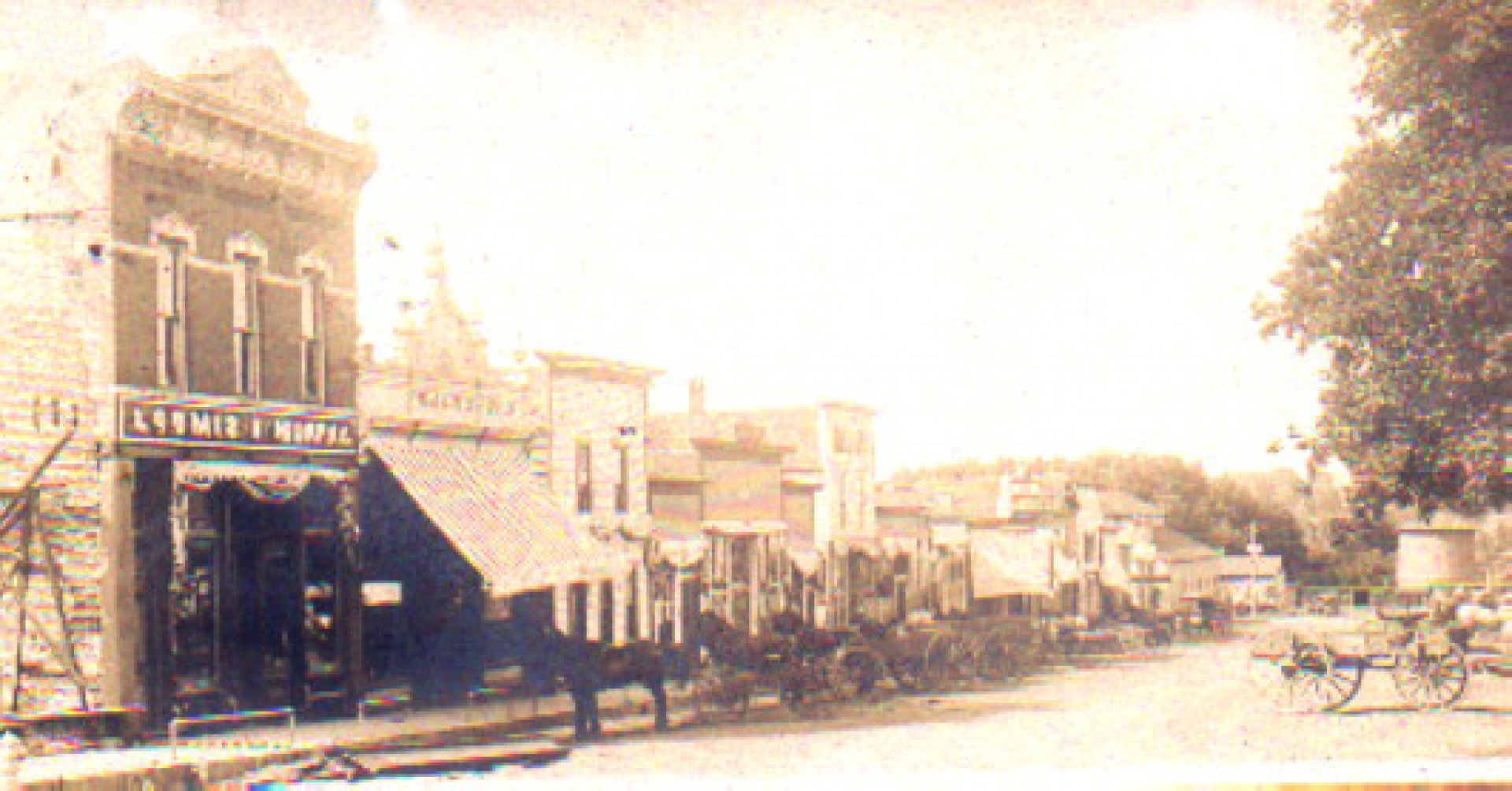
Charter Oak, one of Crawford County's most aggressive towns, was, in the early days, a part of Monona County and was not identified with the history of the early settlers. It first became a part of the county as a portion of Boyer Township and, for a long time, was in a sparsely settled district because settlers regarded the open prairie land there of little value, but in this, they were mistaken. The section about the town is rich in the pursuits of agriculture.
The town was started around the year 1869 when W.J. Crombie of Davenport purchased a large tract of land there, and many acres of it broke for cultivation and built seven houses. O.M. Criswell was among the first settlers there and it was around his farmhouse that the town of Charter Oak grew. The town was named after the famous Charter Oak, Connecticut.
The town of Charter Oak did not take form, however, until after the building of the Chicago, Milwaukee, and St. Paul railroad from Manilla to Sioux City. A sale of town lots was had and the bidding was brisk, and from that time on the town continued to grow. The first building there was the old Oak store occupied by W.W. Cushman and was moved from the old site of Charter Oak post office on the Criswell farm. It was for years one of the chief business centers of the city. Long ago it gave way to a modern structure. The town was incorporated in 1891, the first mayor being W.P. Mulhoren.
A large volume of business is done at Charter Oak and the merchants there have well-stocked stores and handsome store buildings. It has a splendid agricultural section to draw from and the homes are well kept and attractive. Today, Charter Oak is equipped with every modern convenience.

Deloit
P.O. Box 473Deloit, IA 51441
Deloit
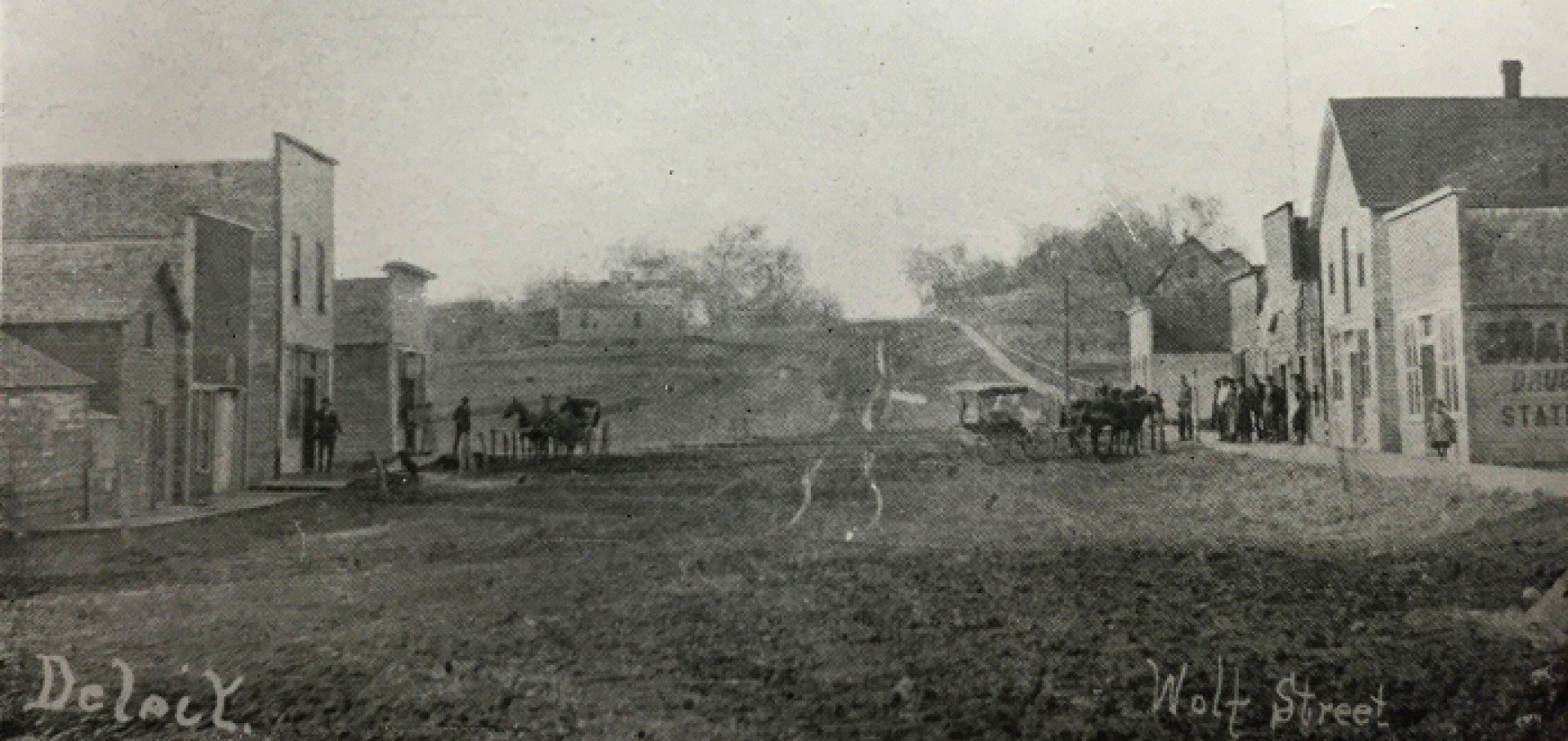
In June 1850, Jesse Mason and his family started out in an ox-drawn schooner from Kanesville (Council Bluffs) and followed the divide between Mosquito and Pigeon Creeks until they reached the site of Denison. They traveled on until they reached a beautiful virgin forest of 2,000 acres in extent on the east side of the Boyer. Mason was soon joined by Noah V. and George J. Johnson, Calvin Horr, and the Levi Skinner family — fellow Mormons.
Before long, this community was known as Mason's Grove. Jesse Mason's cabin was on the main route to Council Bluffs and soon became the stopping place of all who were seeking new homes in that part of western Iowa. The settlement around Mason's home thrived. Before five years passed, there was a score of cabins in the grove.
Benjamin Dobson was born in Ohio in 1799 and became a miller. He came to Crawford County, Iowa in 1851 and laid out a town site on the west side of the Boyer River across from Mason's Grove. There, he erected the first saw and flour mill.
Mason's Grove eventually became known as Deloit and is the oldest town in the county.
Denison
111 North Main Street • P.O. Box 668Denison, IA 51442
Denison
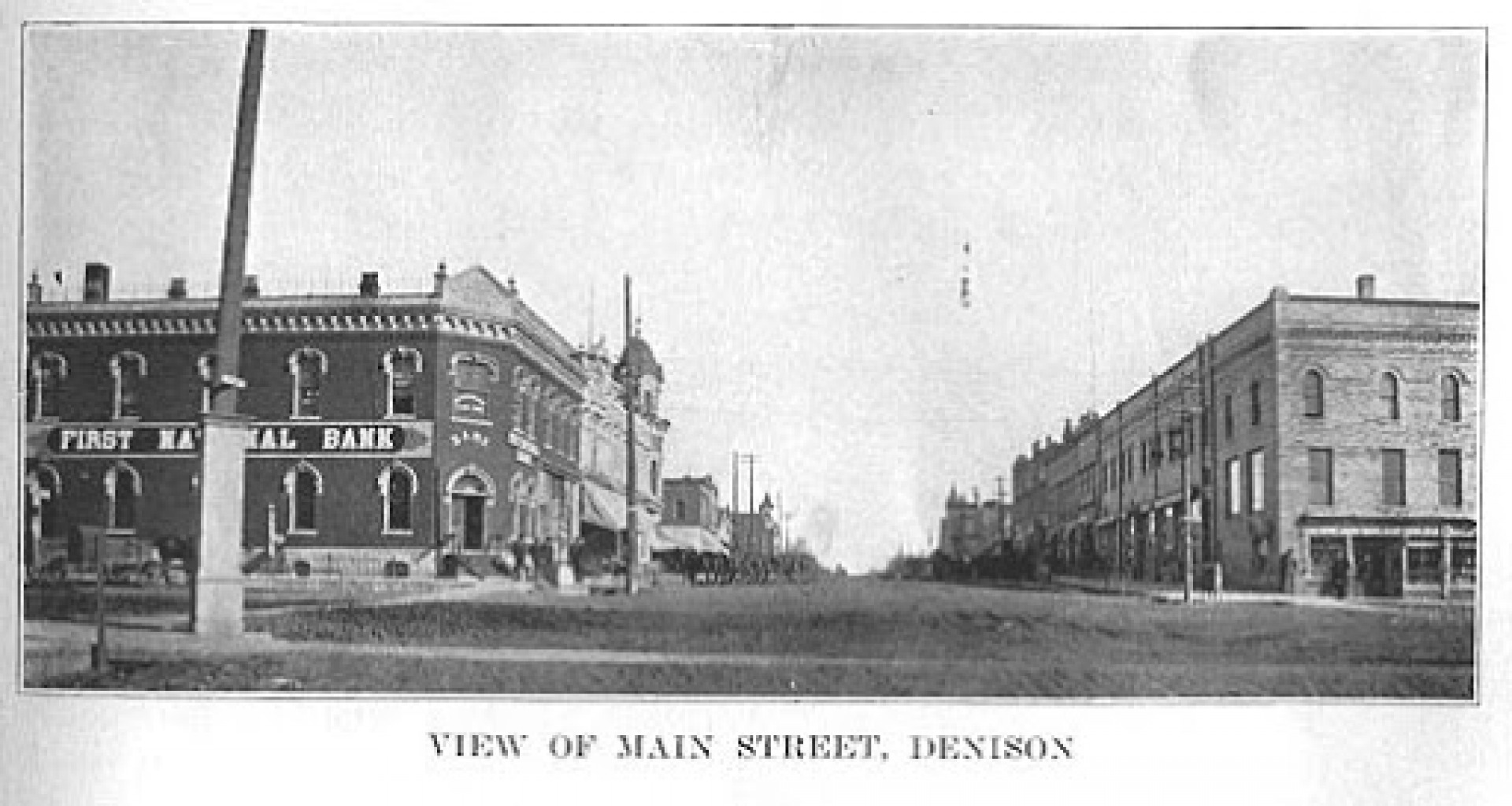
Before Denison was located, Crawford county had been settled for five or six years. There was a flourishing community at Mason's Grove, a little store had been established at what is now Deloit, and along the Boyer at that place there were a saw-mill and a grist-mill. There were settlements in the groves along the creeks and rivers; at Dunham's Grove, on the East Boyer, at Coon Grove, in the southwest part of the county; and at Three Bee Tree Grove. There was also what was later known as Fort Purdy, in what was called the Burnt Woods. All these had been established before the town of Denison had its inception.
Denison did not grow from the natural selection of the settlers themselves, as did Deloit and Old Kiron, and Dow City, but its location was arbitrarily fixed by the representative of a company of eastern capitalists.
The Providence Western Land Company was formed in the fall of 1855 as a result of the promotion efforts of Mr. J. W. Denison. He interested a large number of men in the city of Providence, Rhode Island, and through his efforts, the company was formed. The government had given the surviving veterans of the war of 1812 and of the war with Mexico the right to preempt one hundred and sixty acres, each, of the unoccupied lands in western states. These veterans had the right to dispose of these lands and many sold their land warrants at sixty cents per acre.
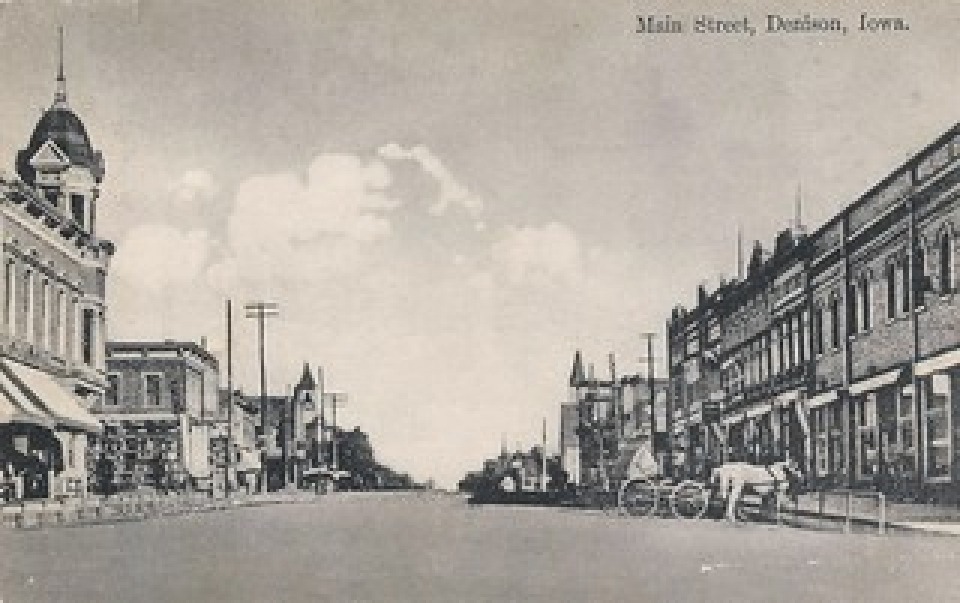
It was the purpose of this company to get these old soldiers to file upon lands in a body, and then to purchase the land from them. Fifty-one thousand dollars was raised for this purpose and the claims were filed and the money used to purchase lands, Crawford and Harrison counties being selected as the scene of activities for the company.
It was evidently the same old story, by which the lands of a score of states have been exploited by pretentious advertising, by flamboyant circulars, and by rather rash promises of quick and golden returns.
After the purchase of the original tract of land, it became necessary to found a town. The present site of Denison was chosen with considerable foresight. From J. W. Denison's own words in 1875 on the founding of Denison we read, "After a careful survey of the field, thro' central, southern and western Iowa, it was decided to pitch our tent, permanently, in Crawford county, being central in location and sufficiently distant from any place of importance to give room for healthful growth, while the soil, streams and timber gave evidence of value equal to any, and far exceeding many of the counties in the State. The four diagonal points of notice, of which this was the center, were Council Bluffs, 65 miles southwest of us; Sioux City, 75 miles northwest; Des Moines, 100 miles southeast; and Ft. Dodge, 75 miles northeast. A state road from Des Moines to Sioux City ran through this county, as did also a road from Council Bluffs to Ft. Dodge; and a dotted line on the maps of that day indicated the line of railroad some day, east and west through the center of this tier of counties, which is the exact center line of the State to a mile. "
"It was in this vacant center that we pitched our tent, at the junction of the Boyer rivers, for the proposed town site, within one mile and a half of the geographical center of the county, and secured some twenty thousand acres of land in its vicinity for the farming interests. As the county seat was not yet located, it was but natural that we should suggest to the locating commissioners appointed by the District Judge, that they consider the merits of this point among others, as the one designed by nature for the shire town of the county. They did so, and as the result the county seat was located where it has since remained and doubtless will continue, as long as the Boyer remains. This was in the spring of 1856, and in the same spring was that memorable Land Grant of Congress for aiding in the construction of four railroads through the State east and west, and one of them 'to run on the parallel of 42 degrees as near as practicable to the Missouri river.' As this line was directly through the center of Crawford county it was but natural to conclude that we were in luck - that we were 'in town.'"
Learn more on the IAGenWeb Project website.

Dow City
117 N Franklin Street • P.O. Box 315Dow City, IA 51528
Dow City
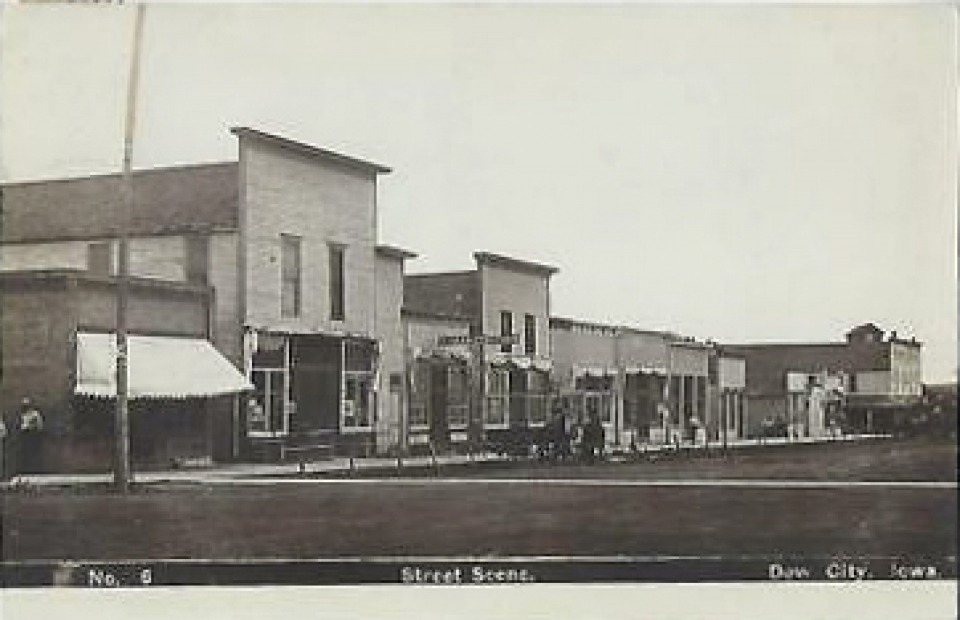
As luck would have it, when the first railroad line was laid in Crawford County, a portion of it ran through land owned by Simeon E. Dow in Union Township. At the time, two things were necessary: a station where the steam engines' water supply could be replenished and a name to identify the station. The station stop was named "Crawford" by the railroad and as more and more settlers moved to the area, it became necessary to toss mail from the train which was handled by Simeon Dow, the government-appointed postmaster there.
Simeon Dow had been a farmer and merchant in Michigan before moving to Iowa. He was wealthy when he arrived and invested most of his wealth in over 1,600 acres of land. Knowing the railroad would bring opportunity, and leaning on his business sense, Mr. Dow started bringing in farm implements and other necessities to sell to the local farmers. From there grew business relationships operated on the honor system where goods were sold by Dow without collateral or interest. It was a system that helped the area grow and endeared people to the Dows through thick and thin.
Shortly after the Crawford station was built, a young man by the name of Abner Graves wandered into the territory from the west where he had mined for gold in California and later worked for the Pony Express. Abner had money of his own, an outgoing personality, and a salesman's gift of gab that was appreciated by Simeon Dow. The two became business partners. Abner's investment brought ten railcar loads of lumber to the town and a lumber store was added to their list of business concerns. Mr. Dow's daughter was equally enthralled with Abner Graves and married him in 1868.
In 1869, the prospects of turning the busy location around the train station into a town became a reality, and Simeon Dow donated a one-half interest in 400 acres of land on a promise that the railroad would build a depot at the train station. With promises kept, the town of Dowville was platted south of the Crawford train station by the Blair Town Lot and Land Company, and Dowville quickly became the largest, busiest, and most competitive shipping and trading centers in Crawford County.
With business success came wealth for Dow and Graves, but all was not well at the personal residence of Simeon Dow. Mrs. Dow had enjoyed a cultured, civilized life in New York where she was born. Michigan had awarded her a comfortable life in a relatively nice country home outside a well-established community. Iowa, which was supposed to have been nothing more than a winter stopping point en route to the warm climes of California, was a nightmare of nothingness, prairie grass, and unimaginable hardship. Her husband's brother, wealthy in his own right had built for his wife a large mansion in Ypsilanti, Michigan and her daughter, married to Abner Graves, was living in the magnificent home he had built for her on the corner of Howard and Myrtle Streets in Dowville.
In 1872, a flurry of activity began in the Dow's backyard. True to his promise, Simeon Dow built his wife a mansion, a structure so expertly constructed that it stands as plumb and solid today as it was the day they moved into it in January of 1874.
Mormons and Methodists comprised the largest congregations in Dowville, a Baptist church was organized at the behest of the Dows and Jesse W. Denison was instrumental in helping them establish a congregation. Long after the Dows had passed away, a Lutheran church was established and decades later the community welcomed a congregation of Catholic worshippers.
For those humble and hard-working days, Dowville grew and was officially incorporated in 1879 when it was decided to rename the town Dow City. Success for businessmen and farmers alike was experienced for several years. Business fell somewhat when a north-south railroad intersected at Arion, two miles east of Dow City, but the wild-west excitement of the rowdy nearby rail town kept the community buzzing as strangers wandered into town for meals, temporary lodging, and sometimes downright skullduggery. The safe at the Dow City Bank had its doors blown off and was robbed more than once. The post office was the recipient of many break-ins with the bandits getting away with little for all their efforts. The business section saw many destructive fires and the saloon keepers were run out of town in concert with the fluctuating temperance laws as they would come and go.
The 1880s brought the "Long Depression" worldwide and Dow City was not exempt from the effects. Prices were low and farmers had a hard time paying their bills. Undeterred, Simeon Dow continued doing business on the honor system and mortgaged nearly every parcel of land he owned for $25,000. Bolstering his faith that the local economy would improve was the discovery of a freshwater well south of his residence so right in minerals that plans were made to build an 80-acre resort complete with hotel, rail service, and spa. The community rallied being the idea and over $10,000 in stock was sold for the project.
A road to the "Mineral Park" was created, trees and stumps were removed to grade 10 miles of driveways throughout the park and a 5-acre man-made lake was created and filled. Everything came screeching to a halt, however, when Simeon Dow opened up the newspaper the last week of December in 1889 to learn that the Bradstreet Credit Reporting Company had declared him and Abner Graves broke based on a telegraph sent to them by Dow City banker, Sid Green. Creditors called in the two men's loans, and the Mineral Park project did not continue. Abner Graves was forced into bankruptcy and Simeon Dow was forced to sell all of his land except for his mansion and the 40 acres on which it stood.
Any hope for the continued growth of Dow City was forever halted in 1905 when Sid Green's bank failed and Dow City was unable to recover from the enormous half-million-dollar loss.
Kiron
12 N GroveKiron, IA 51448-0215
Kiron
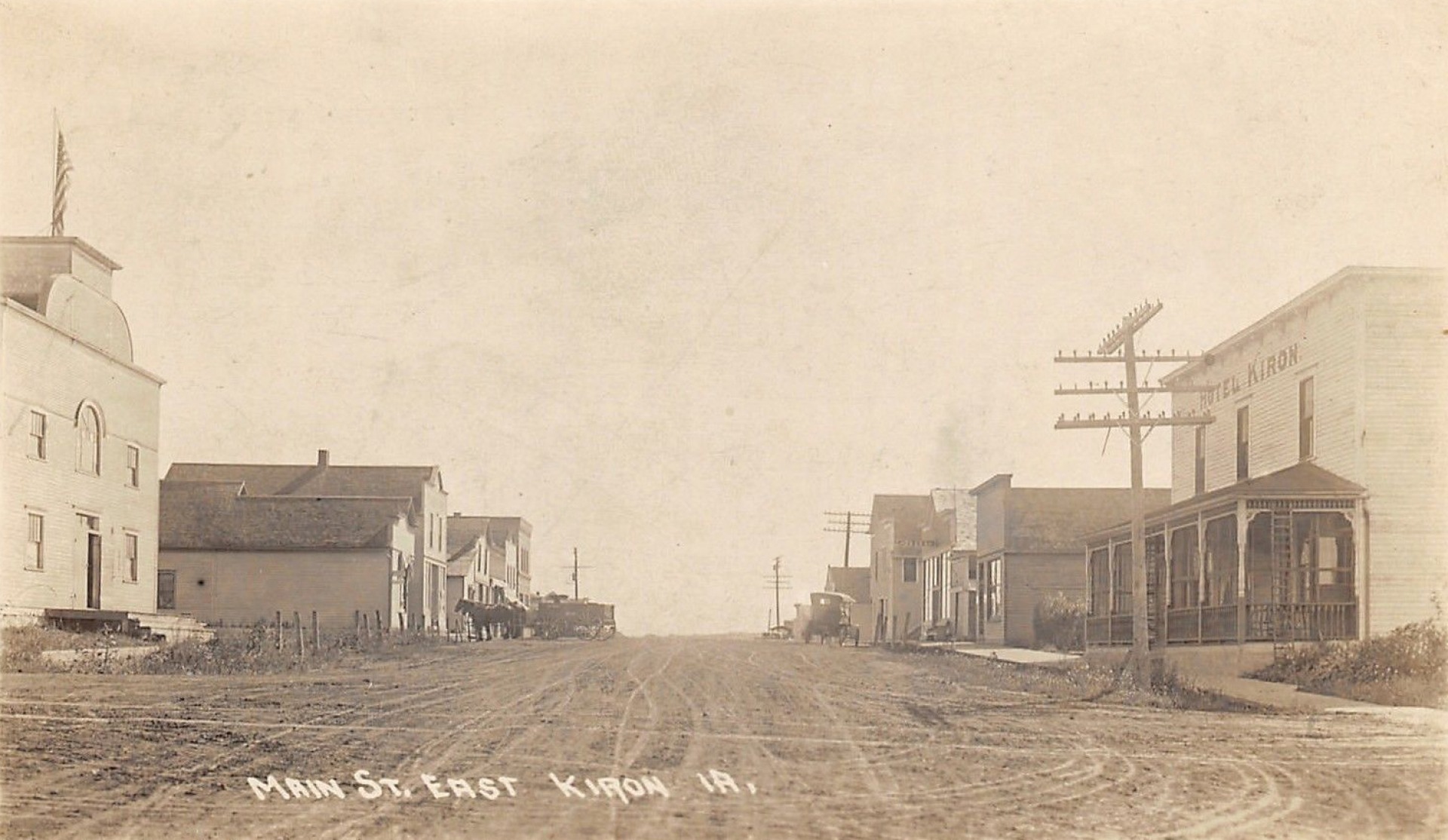
Blessed With the Best
First known as "the Swedish Settlement," Kiron had a good start around 1867, but the railroad, unable — or unwilling — to locate its depot reasonably near the established community, forced her citizens to pack up and move a mile west and start all over again. While a majority of the homes and business houses were moved to the new location, some remained and Kiron then had two identities, "Old Kiron" and "New Kiron." After August 24, 1899, when town lots were offered for sale in the new location, the "Old" and "New" monikers were dropped and Kiron was finally known as just plain "Kiron."
The town was "Blessed With the Best" in their own terms, not because the predominantly Swedish population saw themselves better than other citizens of the county of various nationalities, but because they boasted of having more churches than saloons. For a town whose population never grew to reach over 300, they felt it quite a blessing. They started with the Swedish Baptist Church, which broke apart creating the Free Mission congregation, followed by the Swedish Lutherans who built their own church and finally the German Lutheran Church. They may not have seen eye-to-eye on religion, but on one thing they could agree: high moral standards that kept many a saloon-keeper looking for a thirstier town to do business.
After all the building of the new town, Kiron was described as "a prosperous, thriving market town full of life and push and energy with nearly every branch of business represented." The main part of town was nestled north of the railroad where an east-west street was cut into the north-south hill creating a commanding view of the rich and fertile farmland from which the fruits of the farmers' labors provided the certainty of the town's success.
By the time of Kiron's Jubilee celebration, there was yet another observance to add to the boast of being "Blessed With the Best." There was none among them too rich to dominate, nor any so poor as to be destitute. The good Lord had blessed them and they were reminded that ever since the town appeared on the map. The churches and word of God had seen them through. "Do not forget your best friend," it was advised in the weekly news, and so they adhered and prospered.
Manilla
P.O. Box 398Manilla, IA 51454-0398
Manilla
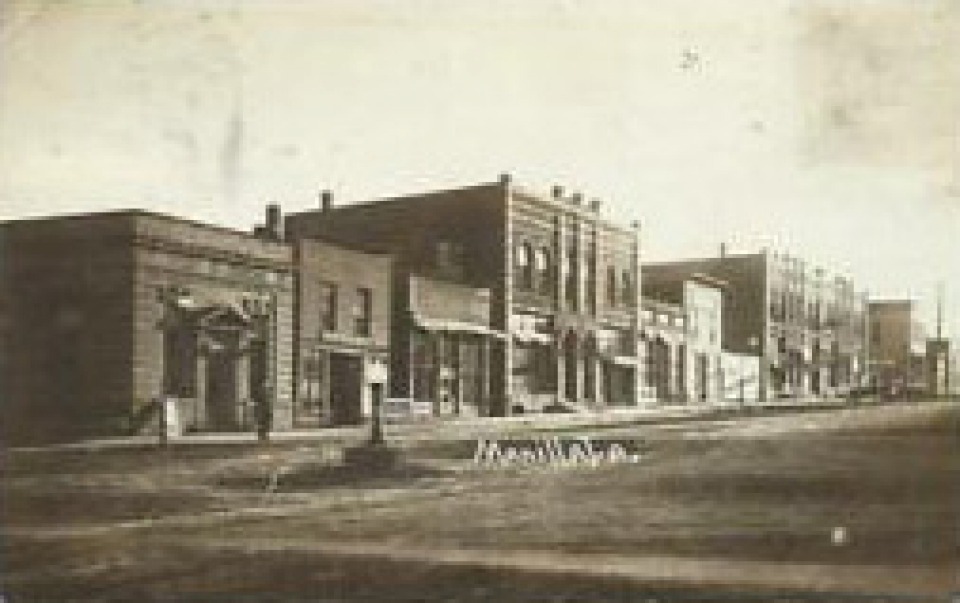
All was quiet and peaceful in Astor until one day some strangers appeared: railroad officials. People soon found out that a shortcut to Sioux City was their aim. The question was were they going to build from Astor or Defiance? It was soon found that they were going to build a new town just two miles east of Astor. The railroad bought W.L. Paup's farm, had it surveyed, and lots staked out. The sale of lots was held in November and $13,000 worth of lots were sold. Houses sprang up like mushrooms overnight.
You can imagine the excitement this brought to Astor. The townsmen were bewildered, then decided they had better move to the new town. Residents of Astor put their business places and homes on wheels and moved to the new town — the moving being done with horses, mules, and oxen. It was a lot of hard work. They soon lined up along the new main street with corn stalk and fodder under their feet. Instead of a gold rush, it was a rush for the new town. With stores still on stilts, they were ready for business. The two blacksmiths, Palmer and Brown, were the first to leave Astor and move their places of business. Their business was necessary for the building of the new railroad as it took many horses, mules, and equipment. A boxcar served as a depot and freight house in one. It was a bit crowded but was all they had.
E.H. Hanne was the first grocery store to move to the new town. It was located where the Memorial Hall now stands.
Paupville or Manilla? Let a Tug-of-War Decide the Winner!
The new town did not as of yet have an official name. In 1885, Astor celebrated the Fourth of July and one of the program features was a tug-of-war. Since the new town did not have a name, they decided to name it with the tug-of-war contest. There were some who thought the town should be named after Les Paup (who owned the land before the railroad bought it). They wanted it called Paupville.
Until this time, grain had been bound by hand, but the self-binder had just been invented. With it, a twist had to be used. Mr. Blackburn's hardware store in Astor was sending our circulars advertising the new twine, called Manila Binder Twine. Mr. Blackburn furnished a Manila rope for the tug-of-war and suggested the town be named Manilla.
Some of those pulling for Manilla were Cash Crakes (father of Grace Schram), Ad Morgan (Cicero Morgan's father), Luke Tillet, Charley Schroeder, and two others. Those pulling for Paupville were Ed Saunders (father of Harry Saunders), Charles Saunders (father of Chuck Saunders), Will Theobald (father of Ed Theobald), and three others. There are those who wonder how Manilla got two L's. This seems to have happened at the recording of the town name.
The post office at Manilla was established at the opening of the town. The first postmaster was G.W. Brokaw. In 1886, the postmaster at Astor resigned for nearly all the residents had moved to Manilla.
Learn more at IAGenWeb Project's website and see the sale of lots announcement in this historic copy of The Denison Review.

Ricketts
P.O. Box 47Ricketts, IA 51460
Ricketts
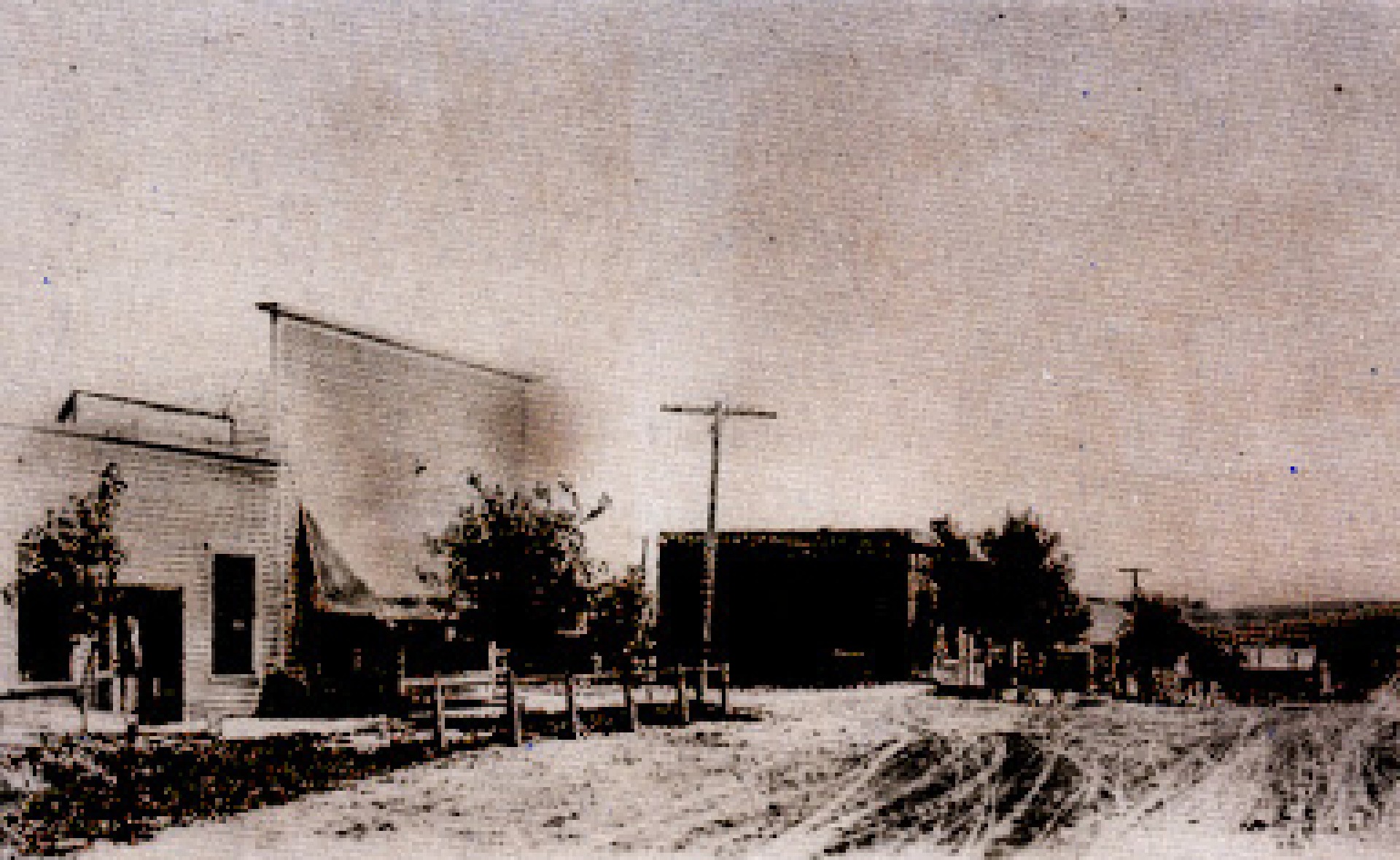
1872
This year saw the final formations of the county townships as we know them: Otter Creek, Soldier, Morgan, and Hanover. The town of Ricketts would eventually spring up in Soldier Township as a consequence of a new railroad that was built by the Boyer Valley Railroad Company.
1899
The Boyer Valley Railroad Company began building a branch line in the spring from Boyer that would extend southwest throughout the county, ending at Mondamin in Harrison County. Several miles north of Charter Oak, the town of Ricketts was established. The first train service on the line occurred on July 24. Ricketts is located in Sections 35 and 36 in the southwest corner of Soldier Township.
1907
A fire consumed most of the business section. The fire started around 2 or 3 a.m. in Pete Peterson's saloon in the harness shop which was in the back. When the fire broke out, citizen Louie Johannsen got so excited he forgot to put on his shoes before he came running to help. He was on the roof of the machinery building fighting the fire when his wife, Emma, came with his shoes.
1999
The town centennial was celebrated June 25 to 27. A new town sign welcomes visitors to "The Middle of Nowhere." The first Ricketts Kids Reunion was held in conjunction with "Middle of Nowhere Days." The reunion featured representatives from 253 Ricketts families who came from 22 states.
Today
Ricketts is a close-knit community with approximately 150 residents. The annual volunteer fire department pancake breakfast draws a crowd. It is said you have to have a sense of humor to live in Ricketts. There is a blog that humorously posts "Not the Same Ricketts." The number one entry is Dave Ricketts, catcher for the St. Louis Cardinals. He has no connection to Ricketts, Iowa.
Learn more at IAGenWebsite Project's website.
Schleswig
111 2nd St • P.O. Box 276Schleswig, IA 51461
Schleswig
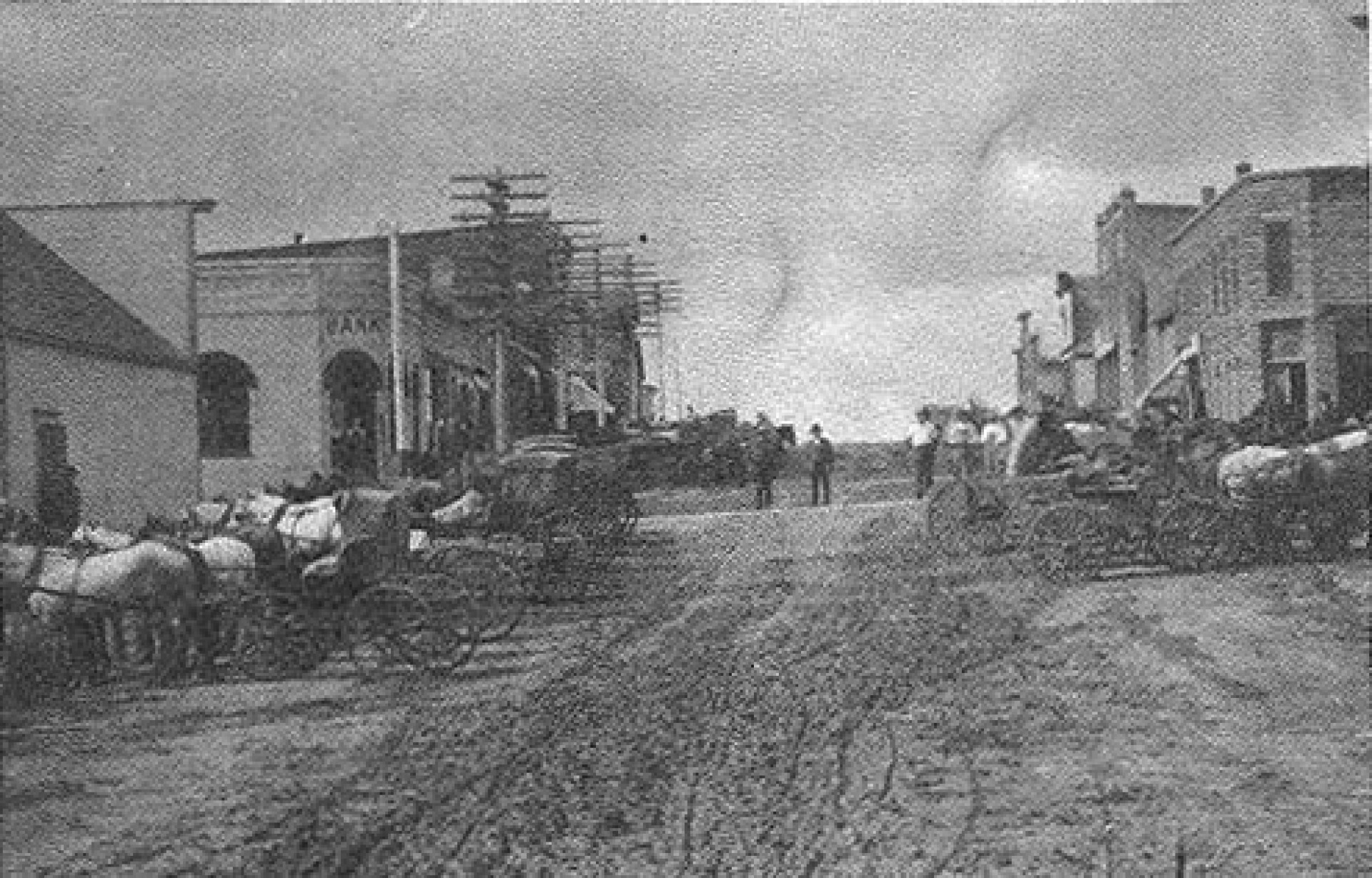
The Boyer Valley Railroad Company, organized in October 1898, had decided to build a branch of the railroad through the area near Hohenzollern. However, the coming of the railroad resulted in the new town of Schleswig.
Construction of the railroad branch line began at Boyer and, upon completion, would extend the sixty-one miles to Mondamin.
The railroad diagonally crossed land belonging to Heinrich Suckstorf in the northwest quarter of Otter Creek Township, sector No. 19. For all practical purposes, the corner became a likely spot for a new town. The site contained 114.96 acres and was purchased on March 1, 1899, from Heinrich and Cathrine Suckstorf for $8,047.20. Lots were laid out by the Western Town Lot Company, a subsidiary of the Chicago Northwestern Railroad Company that bought out the Boyer Valley line in 1900.
Since the land had belonged to Mr. Suckstorf he was given the honor of naming the new town; he chose the name Schleswig for the province in Germany, the former homeland of many settlers.
It was then that Jurgen Schroeder decided to move Hohenzollern the one and a fourth mile east to the new location. According to Lee Bliesmann, on May 11, 1899, families gathered at the railroad site to bid for lots. Bidding was vigorous. The bank lot, for instance, went for $600.00 and resident lots for as much as $90.00. At noon on that day, the people feasted at a picnic dinner by the tracks.
Soon afterward, the move began. Jurgen Schroeder's blacksmith shop was transported to Block 4, Lot No. 9, where with a few changes, it became his residence. The dance hall was relocated in the same block (Lot No. 8), part of the horse barn in the alley, and the saloon and two-story store on the corner of Prairie and Otter Streets on Lots No. 1 and No. 2. The move itself was arduous enough, but, for Mr. Schroeder, it was also a personal tragedy since his wife, Joanna, died before their new home was completed.
Other farmers moved other buildings into town to be converted into stores and homes. Streets had to be laid out and board walks built. People wanted the walks to be level so they laid the boards on beer barrels to raise them in low areas. This necessitated building steps in places.
According to a 1946 timetable, Schleswig was part of the Wall Lake to Missouri Valley passenger line going west on Mondays and Wednesdays, and east on Tuesdays and Saturdays. The original branch line built to include Ricketts, Schleswig, and Kiron was often referred to as the "Punkin Vine." Julius Struck says he saw the first train come on July 24, 1899, and the last train go on Saturday, February 23, 1957.
Learn more at IAGenWeb Project's website.

Vail
P.O. Box 128Vail, IA 51465
Vail
The town was founded in 1867 when a Northwestern Railroad employee by the name of Thomas Ryan arrived at the place that was to become known as Vail. In 1869, he helped the surveyors lay out the town, and, by 1870, Dr. James DeWolf became the first bona fide settler of the town. He erected a one and one-half story building which he furnished as a grocery store, doctor's office, and residence. The following year, a U.S. post office was established.
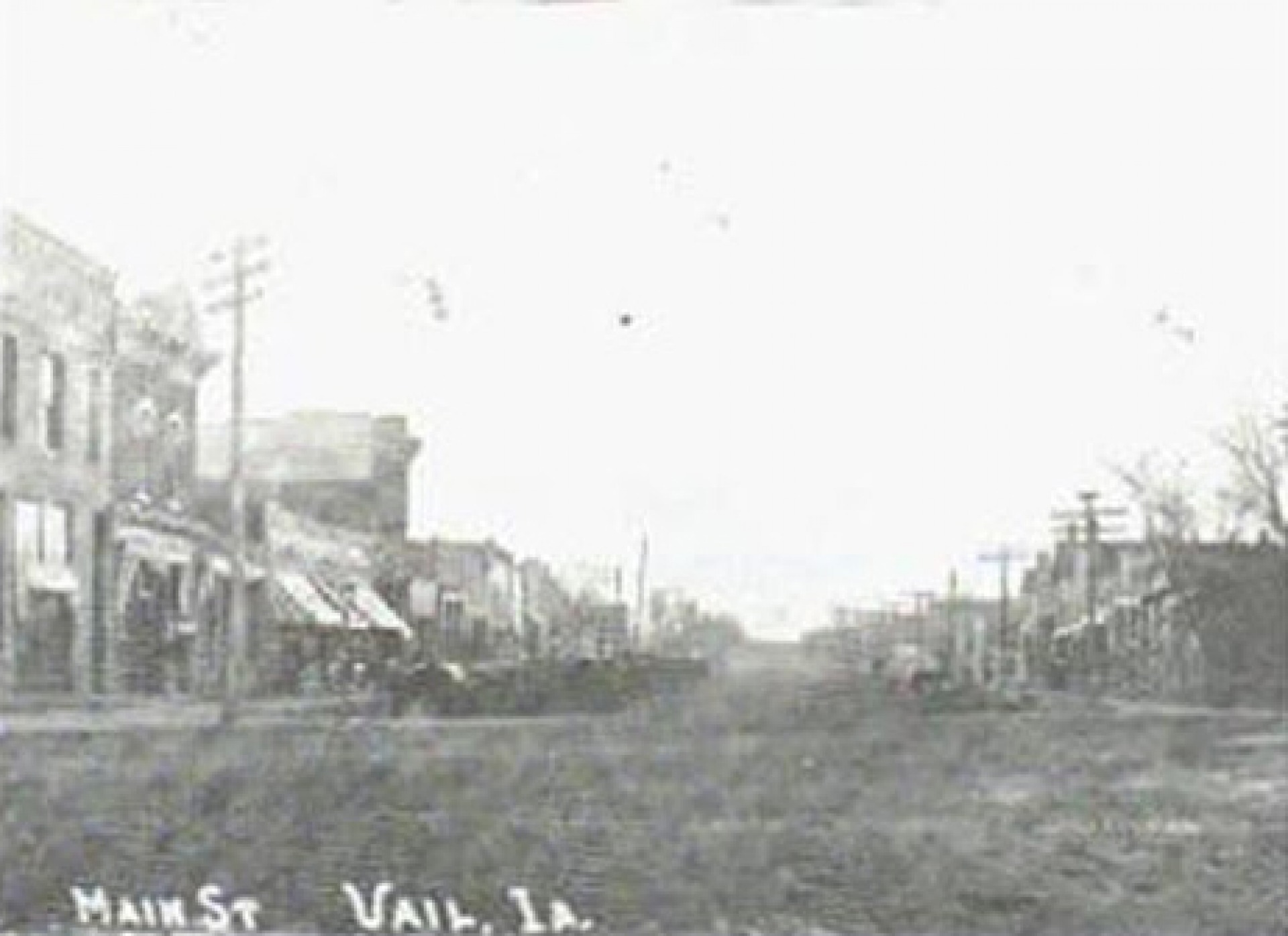
Westside
P.O. Box 417Westside, IA 51467-0417
Westside
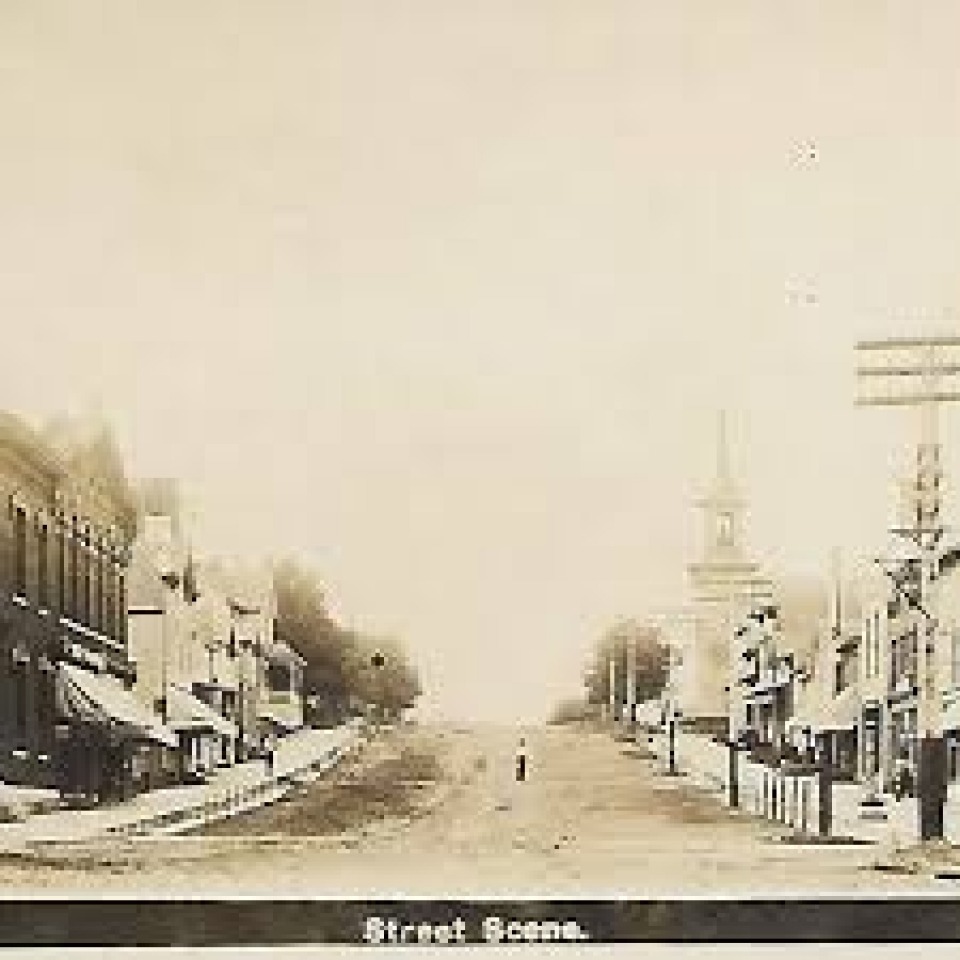
West Side of What?
This railroad town was established on the west side of the Iowa Divide when the Chicago Northwestern Railroad depot was built in 1869. The trains could fill up with water before continuing on their way eastward.
The first inhabitants were railroad workers and veterans of the Civil War.
1202 Broadway
Denison, IA 51442
(712) 263-1280







